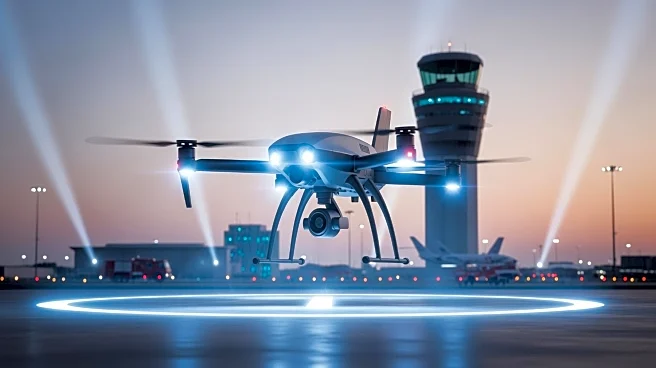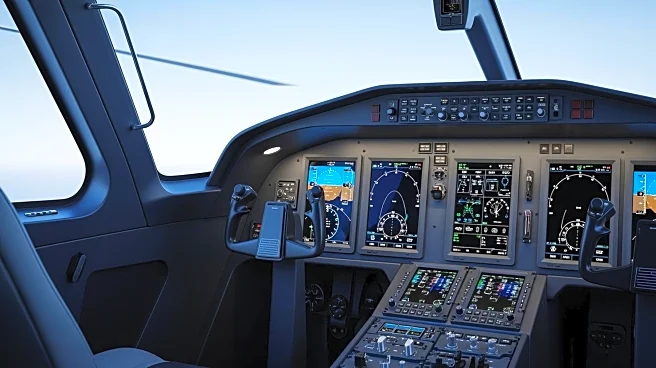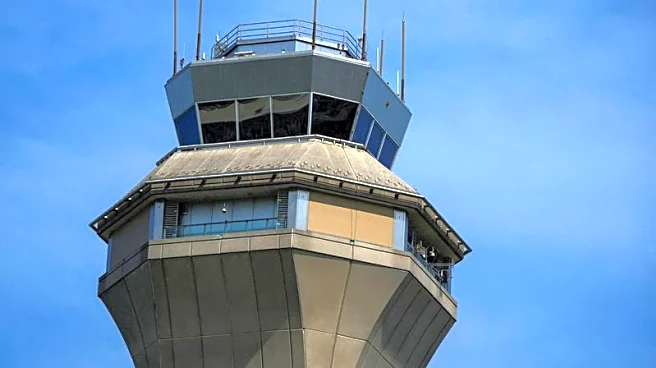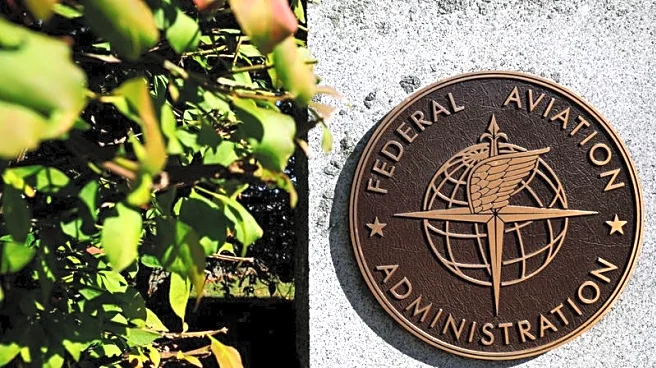What's Happening?
The Senate Commerce, Science and Transportation Committee is advancing the Rotorcraft Operations Transparency and Oversight Reform (ROTOR) Act, which aims to improve aircraft visibility and safety in U.S.
airspace. The legislation mandates that all aircraft, including military ones on non-combat missions, be equipped with Automatic Dependent Surveillance-Broadcast (ADS-B) technology. This move seeks to close existing loopholes that allow military aircraft to disable their ADS-B equipment, potentially leading to accidents. The bill was introduced following a tragic collision over the Potomac River, where an Army Black Hawk helicopter collided with an American Airlines regional jet, resulting in 67 fatalities. The ROTOR Act also calls for safety reviews at major airports and enhanced coordination between the Federal Aviation Administration and the Department of Defense.
Why It's Important?
The ROTOR Act is significant as it addresses critical safety concerns in U.S. aviation, particularly the visibility of military aircraft in controlled airspace. By requiring ADS-B technology on all aircraft, the legislation aims to prevent future accidents similar to the Potomac River collision. This could lead to increased safety for passengers and crew, as well as more efficient air traffic management. The act also represents a bipartisan effort to enhance aviation safety protocols, reflecting the urgency and importance of protecting lives in the skies. Stakeholders such as airlines, military operators, and aviation safety advocates stand to benefit from these reforms, which promise to reduce the risk of mid-air collisions.
What's Next?
If passed, the ROTOR Act will require military training flights, proficiency flights, and certain federal flights to broadcast their ADS-B data. The legislation also sets a deadline for aircraft operators to equip their fleets with ADS-B receiving equipment by 2031. Additionally, the act mandates safety reviews at major airports and increased collaboration between the FAA and the Department of Defense. An Army Inspector General audit of aviation protocols is also part of the proposed measures. The full Senate will now consider the bill, and its passage could lead to significant changes in aviation safety standards and practices.
Beyond the Headlines
The ROTOR Act could have broader implications for military and civilian aviation operations, potentially setting a precedent for international aviation safety standards. The requirement for ADS-B technology may drive advancements in aircraft collision avoidance systems, fostering innovation in aviation technology. Furthermore, the act highlights the importance of transparency and accountability in military operations, which could influence future legislative efforts in other areas of defense and public safety.












